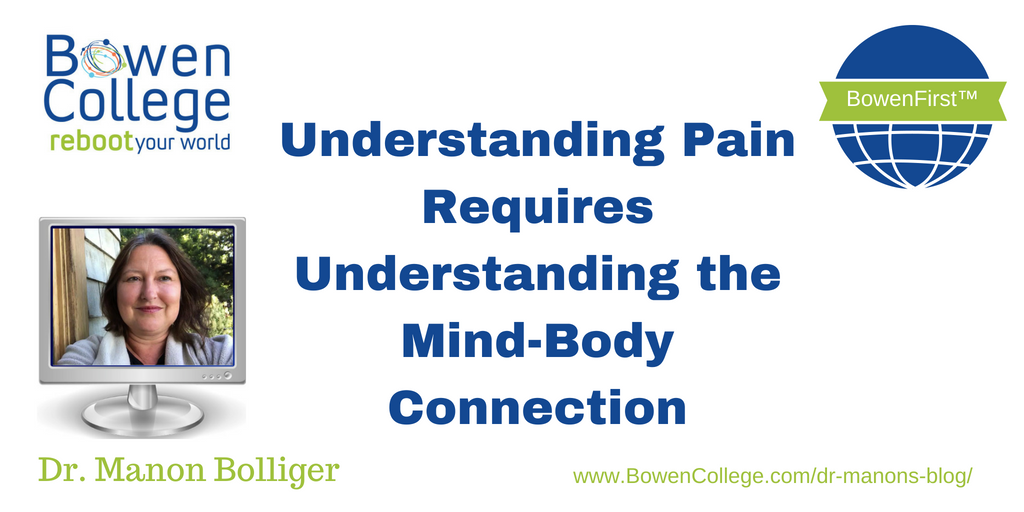In my last post, I discussed how understanding the mind-body connection enables doctor’s to better LISTEN to symptoms. Toward the end, I cited the case of pain as an illustration. Today I want to explore that topic a little more deeply.
Consider the experience of pain: researchers cannot link the lesion/trauma to the degree of perceived pain in a reliable way. Though we may be able to understand some of the neuronal modulations and pathways, we can only surmise the degree of sensitivity felt, and there is a big gap when it comes to “lesional proof.”
Therapeutically, emphasis on pain-killers may actually miss the mark, as there is much more to the story. The best predictor of the downward transition from acute injury to chronic disability is not drug therapy, but rather maladaptive attitudes and beliefs, lack of social support, heightened emotional reactivity, substance abuse, and job dissatisfaction.
As psychoneuroimmunology offers a conceptual and biological understanding of the mind-body connections, pain and the concept of pain has evolved from a purely biomedical concept to a multi-dimensional understanding. Several authors have categorized research-based management and treatment approaches, which have given us a broader definition and understanding of pain.
An individual’s beliefs about pain, emotional experience, and pain behaviour are interrelated. Taking into account the four dimensions of pain experience (nociception, pain perception, suffering, and pain behaviour), the biopsychosocial approach to managing chronic pain is definitely an improvement over the biomedical approach.
In my next post, I will explore the question of what role we doctors play in the creation of disillusioned patients suffering in pain. I’ll see you then.










Hi…. Really interesting. Do you give help to people as to how to deal/ eliminate pain response please? Thank you. Janet
Thank you for your reply! Yes, we train in Bowen Therapy the soft tissue manipulation which has had astounding results in practice allowing for others to find relief from their pain where they had previously found none. In JOy & Health, The Bowen College Team
Make a more new posts please 🙂
___
Sanny
They are coming! Thank you for reading and staying involved! In Joy and Health, The Bowen College Team
I and my friends were found to be analyzing the nice tips found on the blog and then immediately came up with an awful feeling I had not thanked the web site owner for those tips. All of the young men appeared to be so very interested to see all of them and have very much been using them. Many thanks for actually being indeed thoughtful and then for picking out some superb ideas most people are really wanting to discover. Our own sincere apologies for not expressing gratitude to earlier.
Thank you for your encouragement! The blogs are for anyone interested and meant to educate and help those looking for it. So glad you have found use in them and have shared them in your community. Wishing you the very best for a joyous and prosperous New Year! In Joy & Health, The Bowen College Team
I want to express thanks to you for bailing me out of such a issue. As a result of researching throughout the world-wide-web and meeting suggestions which were not productive, I thought my life was over. Existing minus the solutions to the difficulties you have solved through your entire article content is a crucial case, and the kind which could have in a negative way affected my career if I had not encountered your web blog. Your skills and kindness in taking care of all the stuff was valuable. I’m not sure what I would’ve done if I had not encountered such a stuff like this. I am able to at this moment relish my future. Thanks for your time so much for your expert and result oriented help. I won’t hesitate to suggest your site to anyone who would like tips on this matter.
Thank you for sharing your story with us! I can’t tell you how much joy it brings us to hear the experiences people share with us. It encourages us to continue bringing more blog content! Thank you for sharing, The Bowen College Team